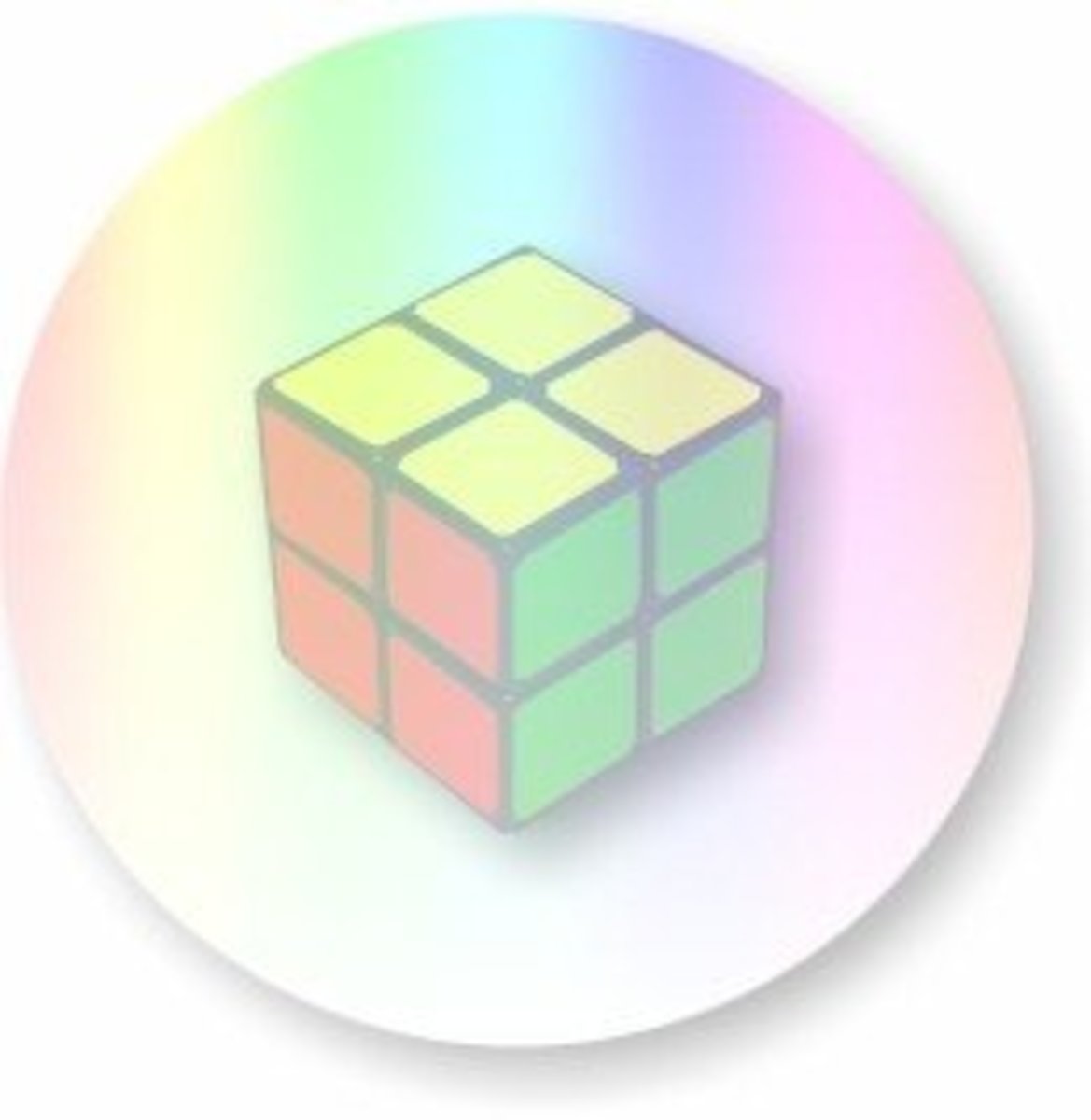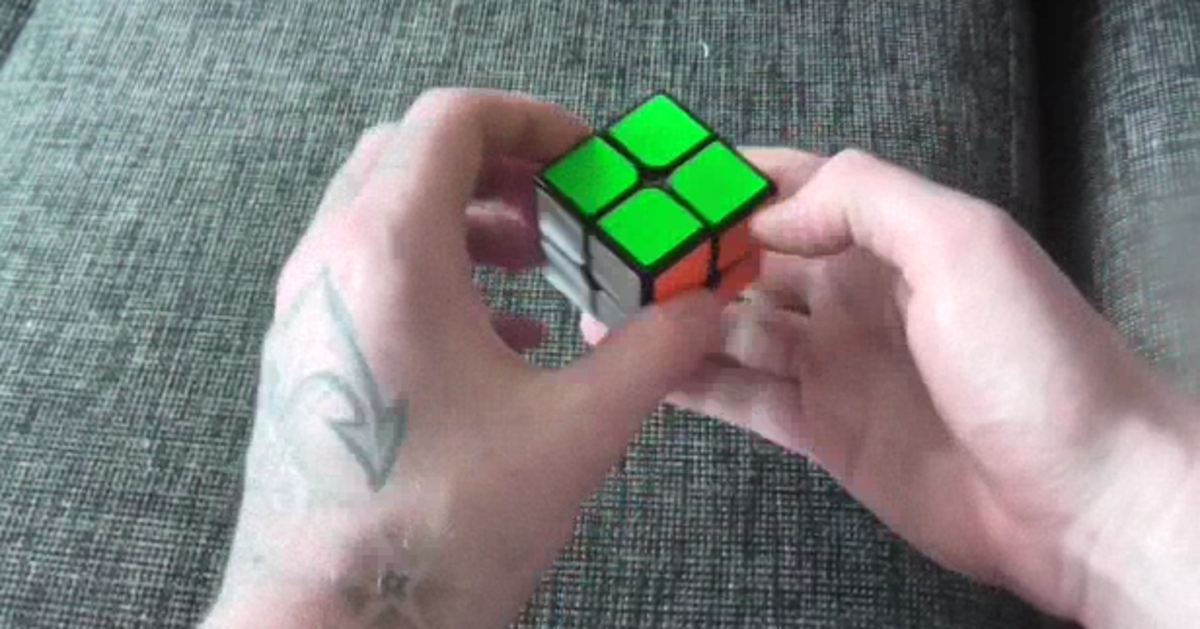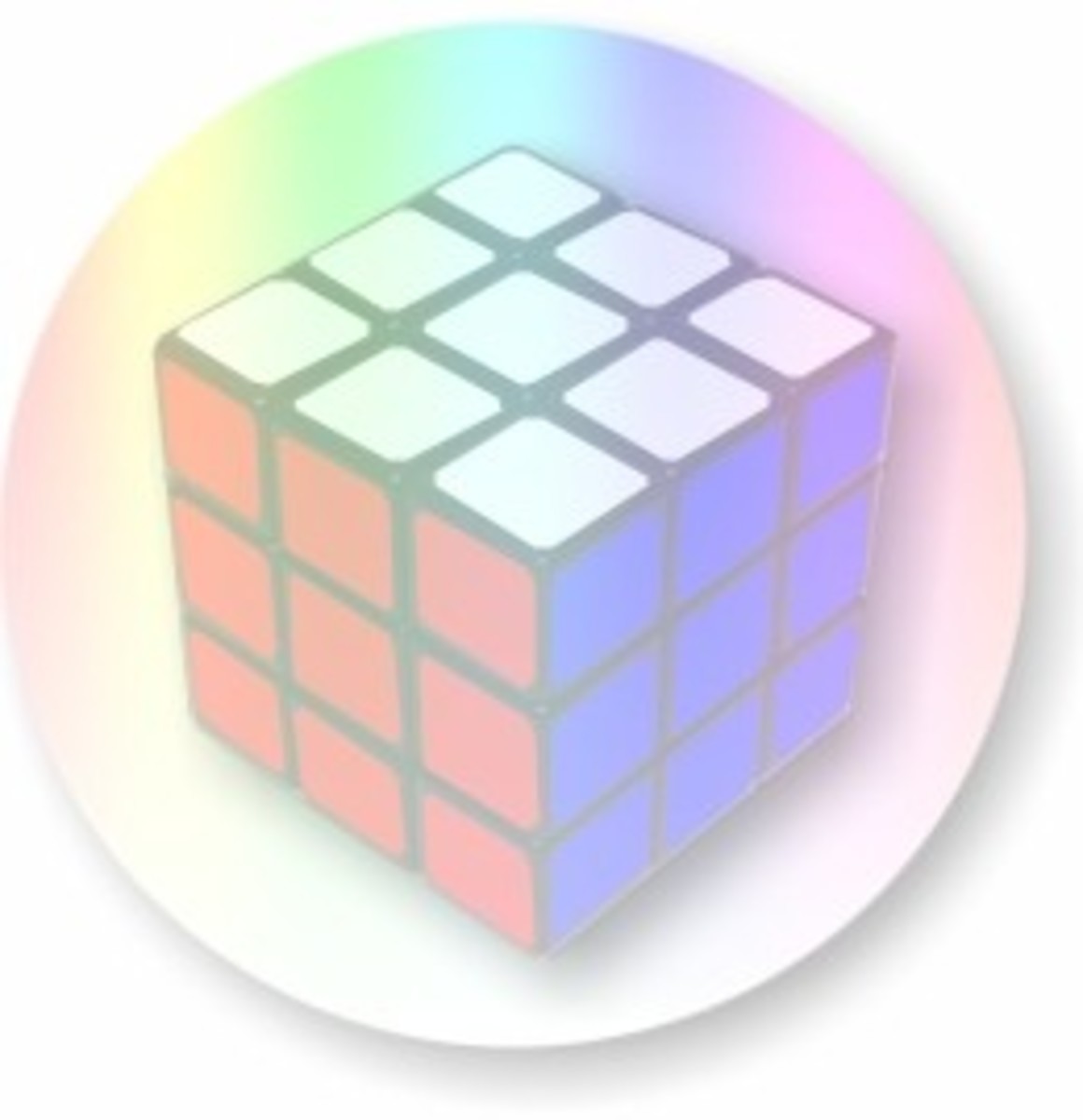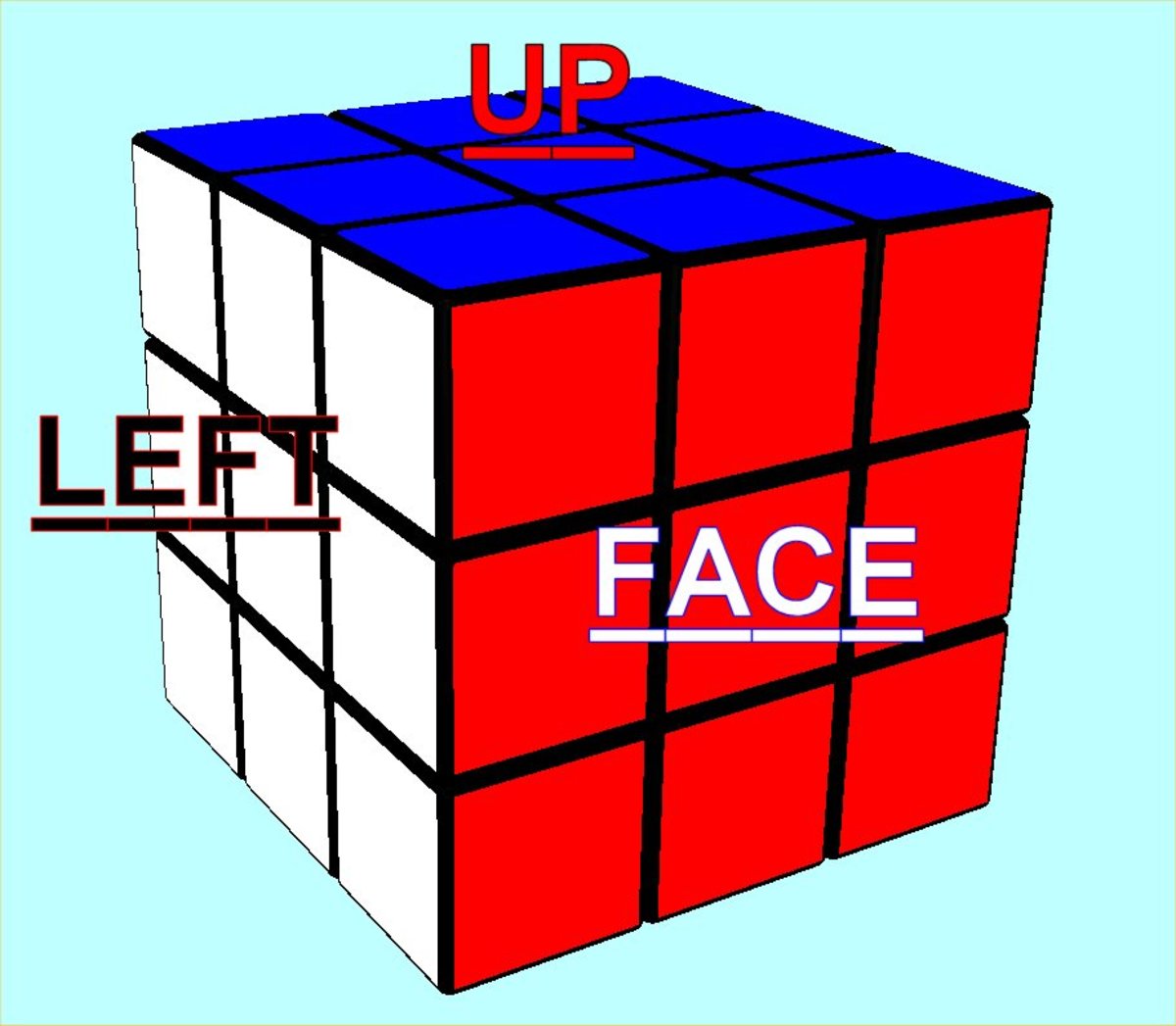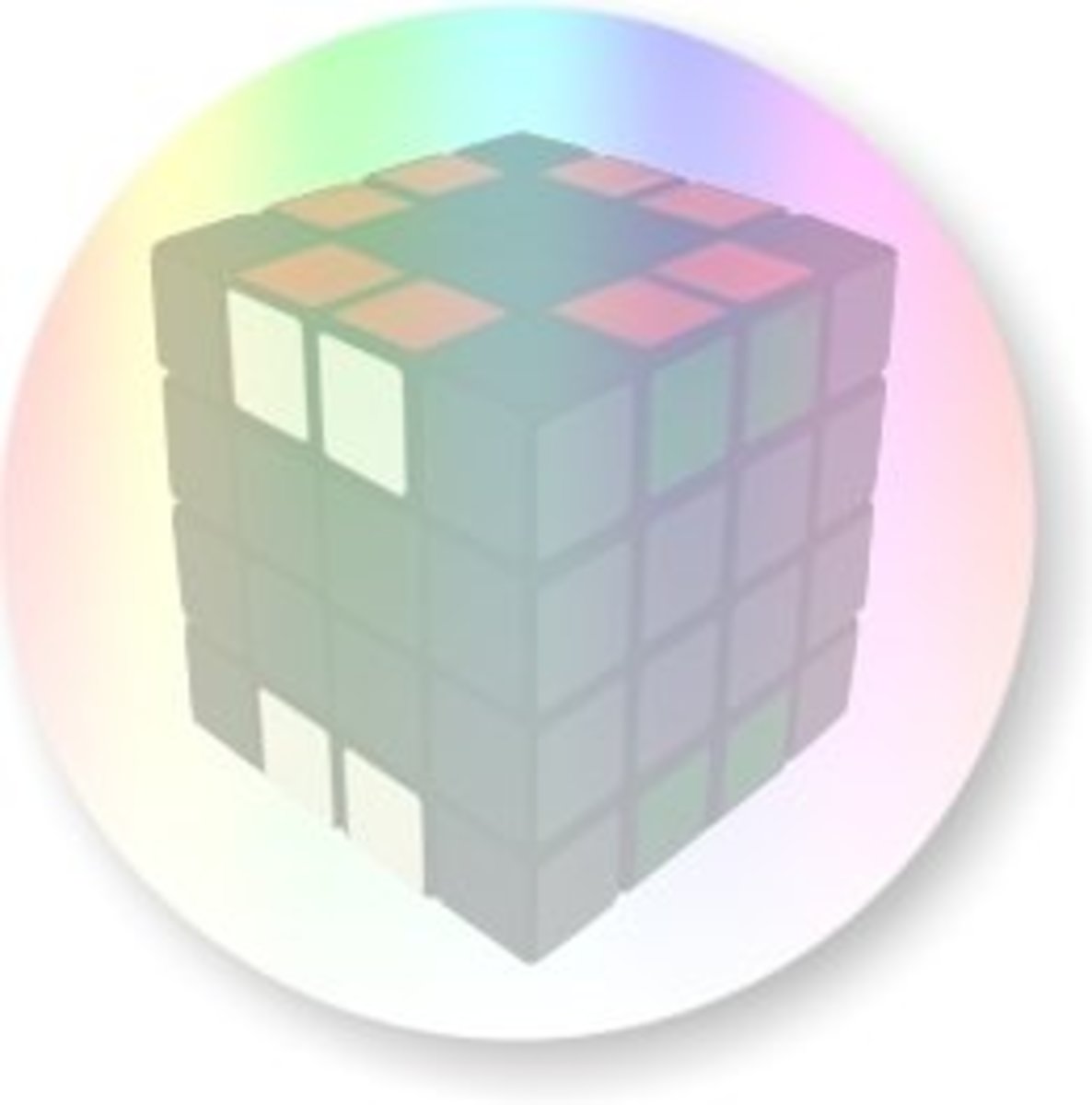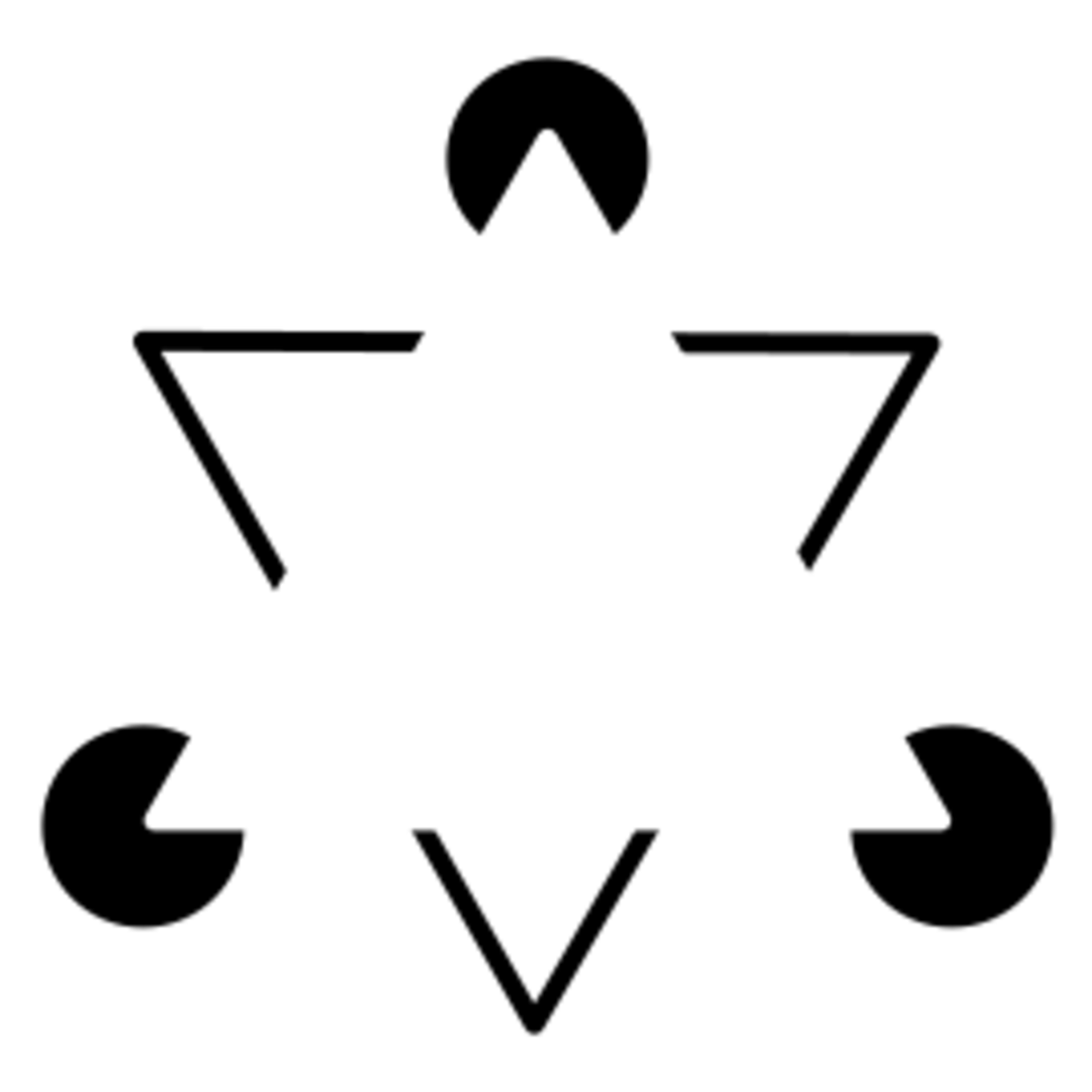Solved! - An Illustrated Guide to Solve a Rubik's Cube for Begineers
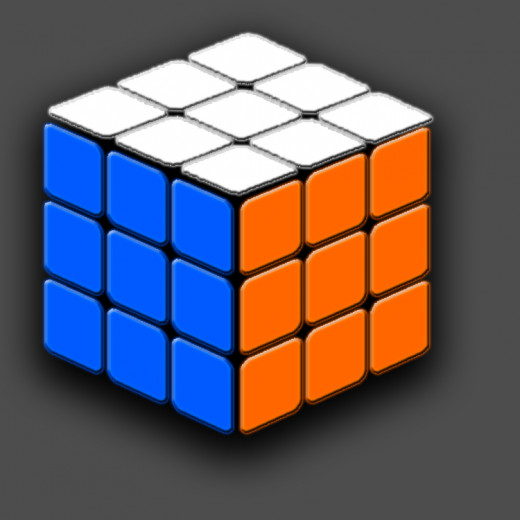
Have you ever solved a Rubik's cube before?
Guidelines
Before proceeding further, kindly read the guidelines given below:
- In the given figures, the grey-colored squares represent the unimportant parts of pieces in the respective pieces. Rest all the parts are important in them.
- Please follow the steps and do not jump on the other without completing the previous one, as it may result in failure to solve the cube.
First Things First, Buy a Rubik's Cube
Yes, this is the easiest step. I recommend that you but a funschool cube, rather than buying the Daichin Speedcubes. Although the Daichin ones are the best, the funschool cubes prove beneficial in building a base in speedcubing and establishing the flow required to solve a cube swiftly. You may buy one from a nearby toy store or shop online, either from Amazon or Ebay

Notations
Learning notations i.e. names of parts and sides of the cube are important, for the algorithms (or rules) are entirely based on them.
These notations are very simple,
- The side of the cube that you are facing is Front (F)
- The side to left of F is Left (L), right is Right (R), and so on.
- The two sticker or two coloured pieces are called Edges.
- The three sticker or three coloured pieces are called Corners.
- If the side, say F is to be rotated clockwise, it is mentioned as F in the algorithm, but if it is to be rotated counterclockwise, it is mentioned as F’ and is called F prime or F inverted.
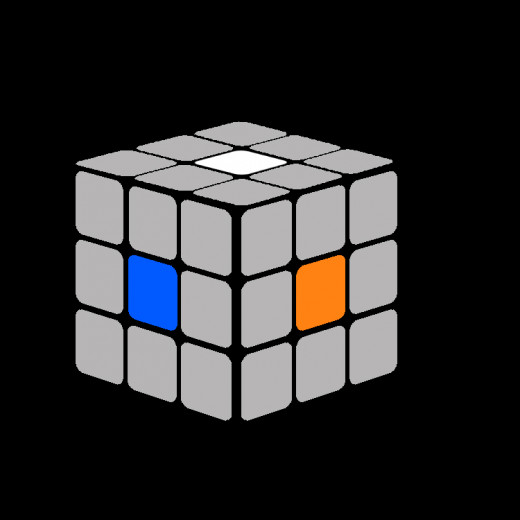
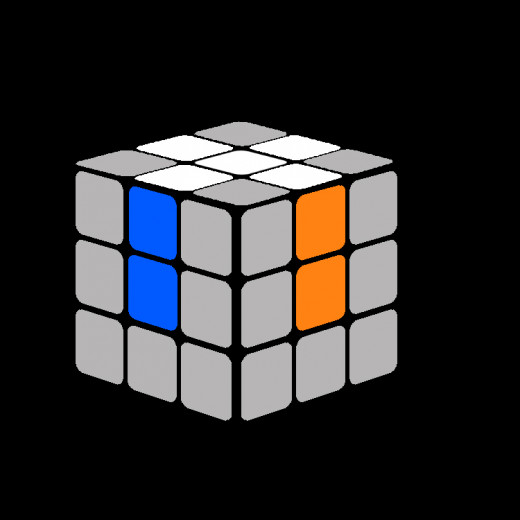
Step 1: Cross
The cross is the most important step, as it is the base for all other algorithms, and the toughest one, because its solution has no particular algorithms, and requires some brain to be solved. Whatever the method may be, the final result should look like the given figure. The crucial point is that no piece of a cube can be replaced from its original position, so the respective positions must remain same.
But there are certain tricks which may help you in solving the cross:
- If the white side of edge is facing the yellow side. match the other side of the edge to its correct center piece by moving the D side. Then move the F side twice to bring the white edge on the white side.
- If the white side of edge is not facing the yellow side but is in the last/down layer, bring the edge to the left or right of the correct non-white side of the edge piece. Then match the non-white side of the edge piece to its center by doing L' or R respectively. Lastly, do F or F' to bring the white side of the edge up.
Note: For most of the workshop period, blue side is Front (F), White/Yellow is Up (U) and Orange/Red is Right (R).
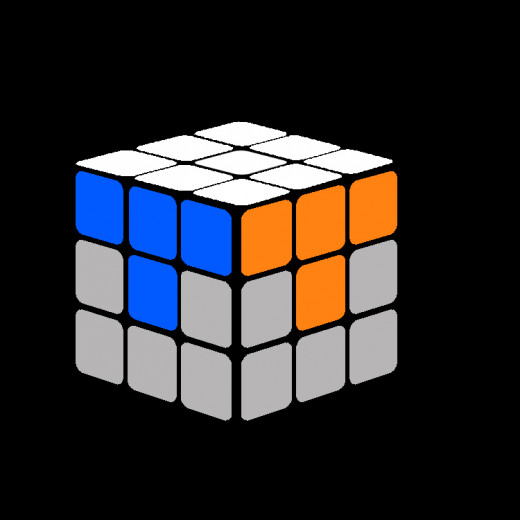
Step 2: First Layer Corners
This is an easy step, which hardy takes 15 seconds to solve after practice. The method is as follows:
- Identify the correct white corner piece between two sides, say blue and orange.
- Take the correct corner place in the upper front right position, and the corner at the bottom of it. Perform the following algorithm repeatedly, until the whit side of the corner piece faces up: R’ D’ R D
- Do this for all other white corner pieces, and you first layer gets solved.


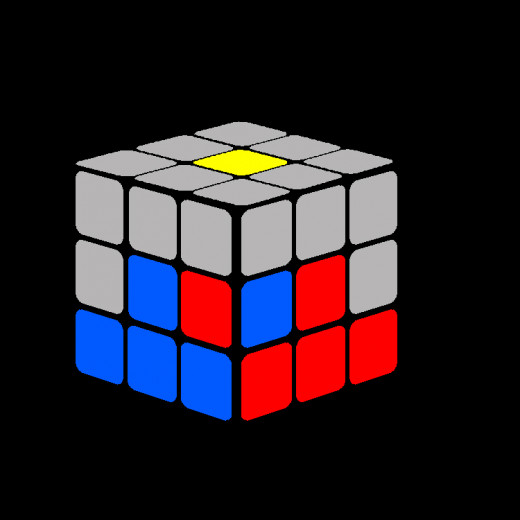
Step 3: Second Layer
Now its time to solve the second layer. For this, follow these steps:
- Make a sort of inverted T by joining an edge piece in the top layer with the correct center color, as shown in the adjacent figure. The edge piece must not contain yellow.
- If the piece’s correct position is in the right side, do U and perform the following algorithm: R U’ R’ U’ F’ U F
- If the edge piece has to go to the left, do U’ and perform the algorithm: L’ U L U F U’ F’
- If in a case, the edge piece is in the correct place but flipped, then hold the piece to left or right and perform the appropriate algorithm, and then using step (ii) or (iii), put it back in the correct place.
- If an unsolved edge is in the second layer, bring it in the top layer and solve it as the flipped edge as in (iv).
- Solve the second layer edges in the same manner until you solve whole of the second layer and get something like this in the second layer.
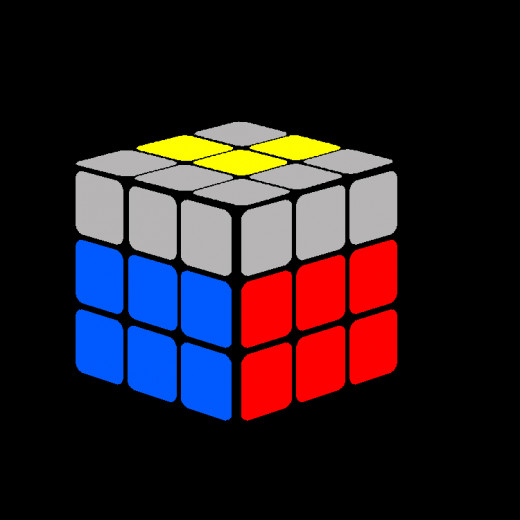
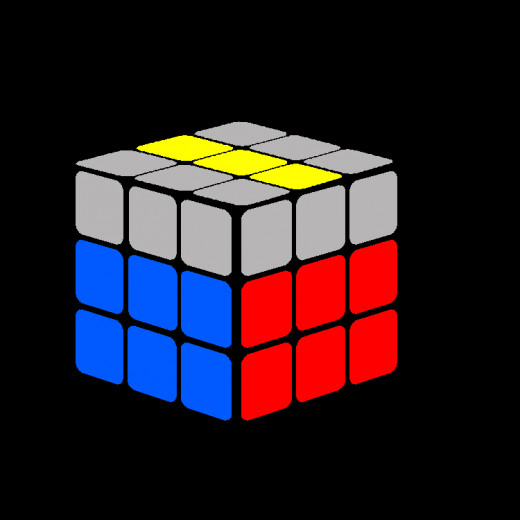
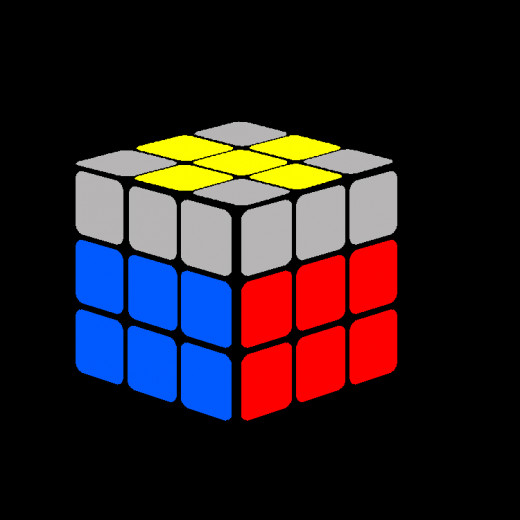
Step 4: Cross (Top/Last Layer)
Much to one’s relief, the last layer cross is solved by an algorithm. The method is given below:
- If you get a dot on the top, perform the following algorithm by taking yellow side as U and any other side as F: F R U R’ U’ F’
- Now you should get a mirror ‘L’ shape. Take this in the upper-left corner and the side opposite to ‘---’ as F, and perform the following algorithm: F R U R’ U’ R U R’ U’ F'
- If you get mirror L after solving the second layer straightaway, use the above algorithm.
- If you get a straight line in the top layer, use the algorithm given in (i)
- Lastly, you would get a cross as shown above. In some cases, the cross may be automatically made after you solve the second layer. In this case, leave this step and proceed to the next.

Step 5: Orienting Top Layer Edge
Next, we need to bring the yellow edges to their correct places. In this step, you will get one of the three listed cases:
- If you get two correct adjacent edges, as shown in the figure, take one correct side as B and the other as R, and perform the following algorithm: R U R’ U R U2 R’ U
- If you get two correct opposite edges, take one of their sides as B and the other as F, and perform the following algorithm: R U R’ U R U2 R’. You will now get two correct adjacent edges. Repeat step (i)
- You may get all the edges correctly oriented. In this case leave this step and proceed to the next.
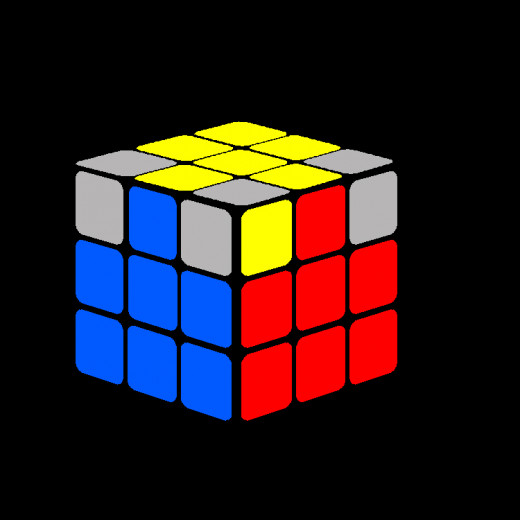
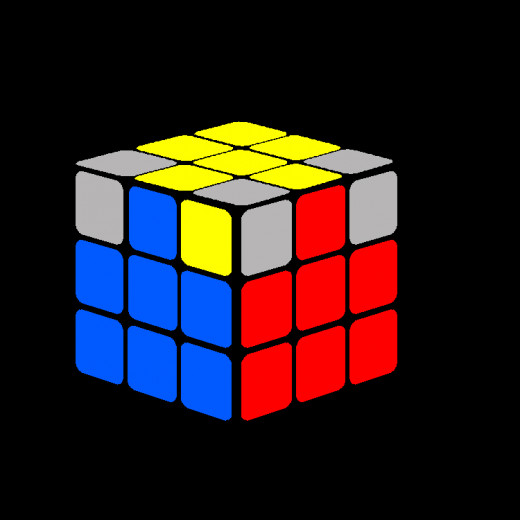
Step 6: Solving Corners Part I
In this step, we make the yellow sides of the corners face up. To do so, we use the algorithm used in step 2:
- You may get one or two or none of the yellow corners facing up. In any case, start from the rightmost unsolved corner, hold it in your upper right side, and perform the algorithm: R’ D’ R D
- Do it until the corner’s yellow side faces up. Then do U’ to bring the next corner to the right side without shifting the front face, and perform the same algorithm.
- It may seem that the algorithm is not working as the cube apparently gets more and more unsolved and scrambled. But believe me, once all the corners are solved, the rest of the cube returns to the original position.
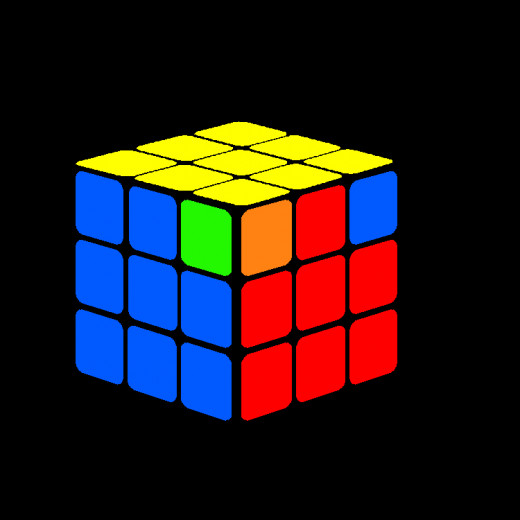
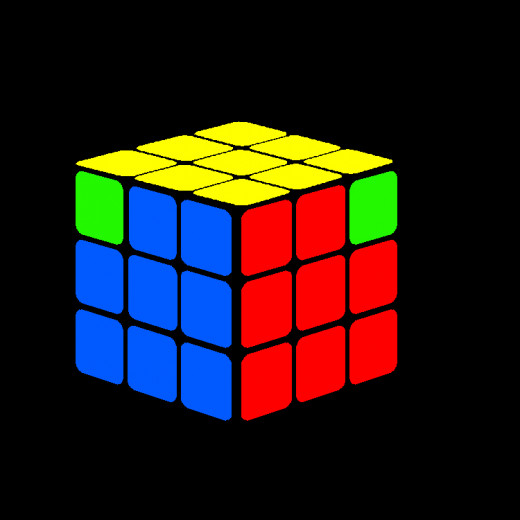
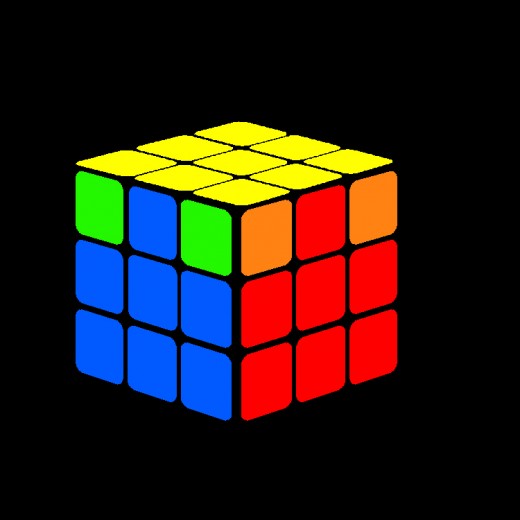
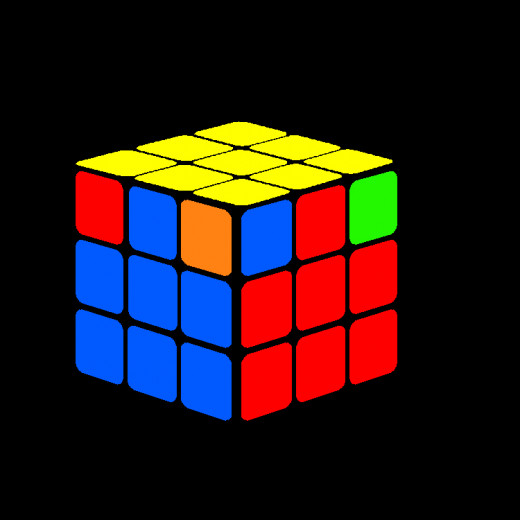
Step 7: Positioning the Top-Layer Corners
This is the last step, and one of the most easiest ones. In this step you will get one of the five cases. In all the cases, the referred sides exclude yellow:
- If you get two adjacent sides of corners having same color on one side, take that side as back face and the opposite as front.
- If the correct corner in the front side is towards the left, perform the following algorithm, R’ F R’ B2 R F’ R’ B2 R2
- If the correct corner in the front side is towards the right, perform the following algorithm, L F’ L B2 L’ F L B2 L2
- If there is no correct corner in the front face and adjacent sides of corners on every side is same, take any face as the front and perform the algorithm as in step (ii). Now you would get a situation same as (ii). Repeat the algorithm.
- If no side has same sides of adjacent corners on one side, perform the algorithm as in step (ii). Now you would get a situation similar to either step(ii) or step(iii). Perform the appropriate algorithm.
- It is also possible that the corners automatically get correctly oriented after step 6. In that case, this step isn’t required.
So, the result is…….
I hope you would have enjoyed solving the majestic cube. Keep practicing for better timings.
For any query, feel free to ask in the comments. I would reply to it as soon as possible. And don't forget to give a feedback.


